In this astonished phase of our social life, the meditative isolation of many can be used as a rediscovery and recovery of wondrous realities that everywhere surround us, each of which certainly carries perennial values. Yes, March was the ancient Latin month dedicated to the worship of Anna Perenna, and the historical connection with fathers and customs gave strength of identity, and we would say today of fundamental culture and wisdom.
We try this by starting from the city elevated this year to “capital of culture,” namely Parma, where the printed program due to the virus has to forcibly drop its deadlines, but without any national feeling of any loss. A program foiled largely on transient happenings, devoid of a datum of permanent elevation i.e. public education on cultural heritage. It must be said, however, that Cultural Assets are those of the “forever possession” of a civilization and for that matter also of a city, a territory: they are the living heritage of the community itself, and for that reason they are to be revalued in continuity through the generations, thus becoming a great good, often capable of attracting a desire for universal assumption.
This is the case, of course, with the artistic realities of Parma: the fascinating territory rich in superb castles (with Reggio and Piacenza); the Antelamic epic with Fidenza; its own splendid centuries-old architecture in the city, and urban layout; the marvelous and unforgettable frescoes within its monuments; and the archaeological and pictorial collections that are truly unparalleled. About these realities in the official program, which is full of words, there is almost nothing. We should also tell ourselves that we are in the context of a Region that has always talked a lot about Cultural Heritage, but has never promoted a general system of popular education about the Goods: hence proceeds a widespread inattention among the people, and hence are born also listless administrators.
 |
| Parma with the towers of San Giovanni, the Duomo and the Steccata. In the center, the solemn Antelamic Baptistery. |
Parma is a quiet example. So far the tourist flow to the city, much of it international, has been the presence of the stupendous works of Correggio and Parmigianino. These are first and foremost an almost incomparable anthology of frescoes: the three Correggio domes; Parmigianino’s Steccata archway; the other walls and vòlte, all by authors of the highest school, which the churches offer with surprising abundance. Also in the Galleria alla Pilotta a series of masterpieces that every city in the world can envy. Of these realities, as substantial elements of culture, nothing appears in the program. It is as if the city denies itself.
With this intervention we would like to make up a little for the great forgetfulness, mindful of the “ethesio breath” that Arrigo Boito offered Giuseppe Verdi. 2020 marks the Fifth Centenary of the fresco of the Dome of St. John the Evangelist, a resounding work by Correggio. Forgetting Correggio in Parma is like Urbino forgetting Raphael, or Vinci Leonardo, or like Recanati forgetting Leopardi. Yet already in 2018 no one celebrated the Fifth Centenary of the Camera di San Paolo, “the most perfect room of the Italian Renaissance”-a pictorial event of worldwide appeal that would have filled every person and entire crowds with cultural enthusiasm, if involved. For such an astounding cosmology of semantic archaeologism and Christian humanism could not even be presented at it the only publication finally of innovative reading that was produced: by Renza Bolognesi Correggio and the Camera di San Paolo. Unvelamenti inediti, Silvana Editoriale, 2018.
In 2020, being “Parma capital of culture” falls the Fifth Centenary of an almost superhuman pictorial work that was already called “miracol d’arte sanza exemplo” and that really transfigured the whole prosody or forma mentis of the Renaissance, giving rise to the birth of the new language of art. It is the interior figuration of the dome of St. John the Evangelist, a distinguished basilica of the urban Benedictine men’s monastery, by the hand of Correggio. The church was then of very recent construction (1519), sharply classical in character, already influenced by Bramante’s advent of St. Peter’s, and therefore “more Roman” endowed with a densely symbolic dome emergence at the junction of the nave and transept. Not only did this solemn element denote ecclesiastical encroachment, but the whole architecture was preordained for the main mystical theme of temple expression: the Eucharistic celebration. So that the learned Abbot Girolamo Spinola found an extraordinary co-rapporteur in Antonio Allegri, 30 years old, already endowed with an exceptional biblical and theological training built up during his years at Polirone with the great monk Gregorio Cortese, and capable also of “cogitating in painting” in novissimo fashion principles and scenes of absolute scriptural value.
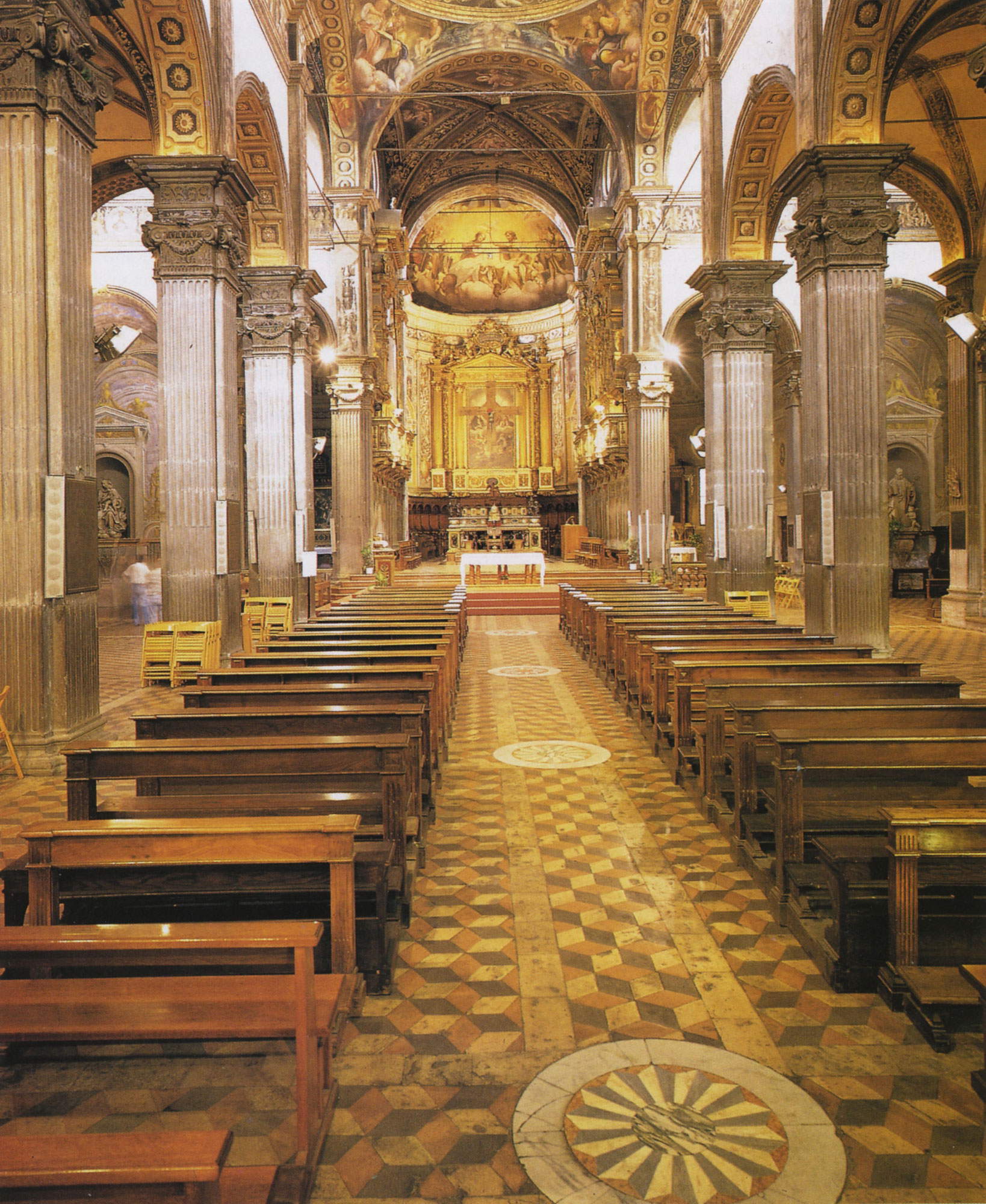 |
| Interior of the Basilica of St. John the Evangelist in Parma |
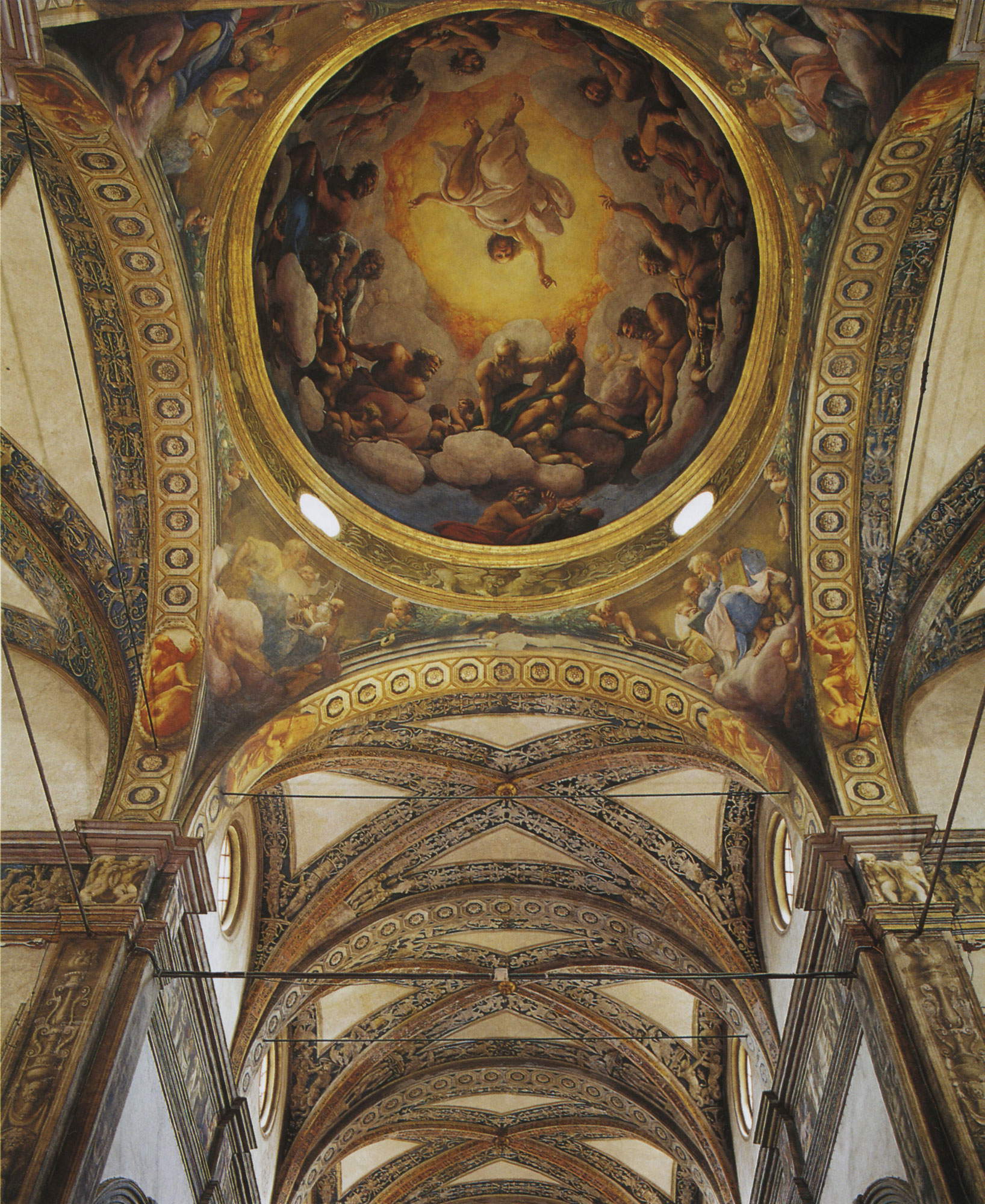 |
| View toward the dome from the choir with the call of St. John |
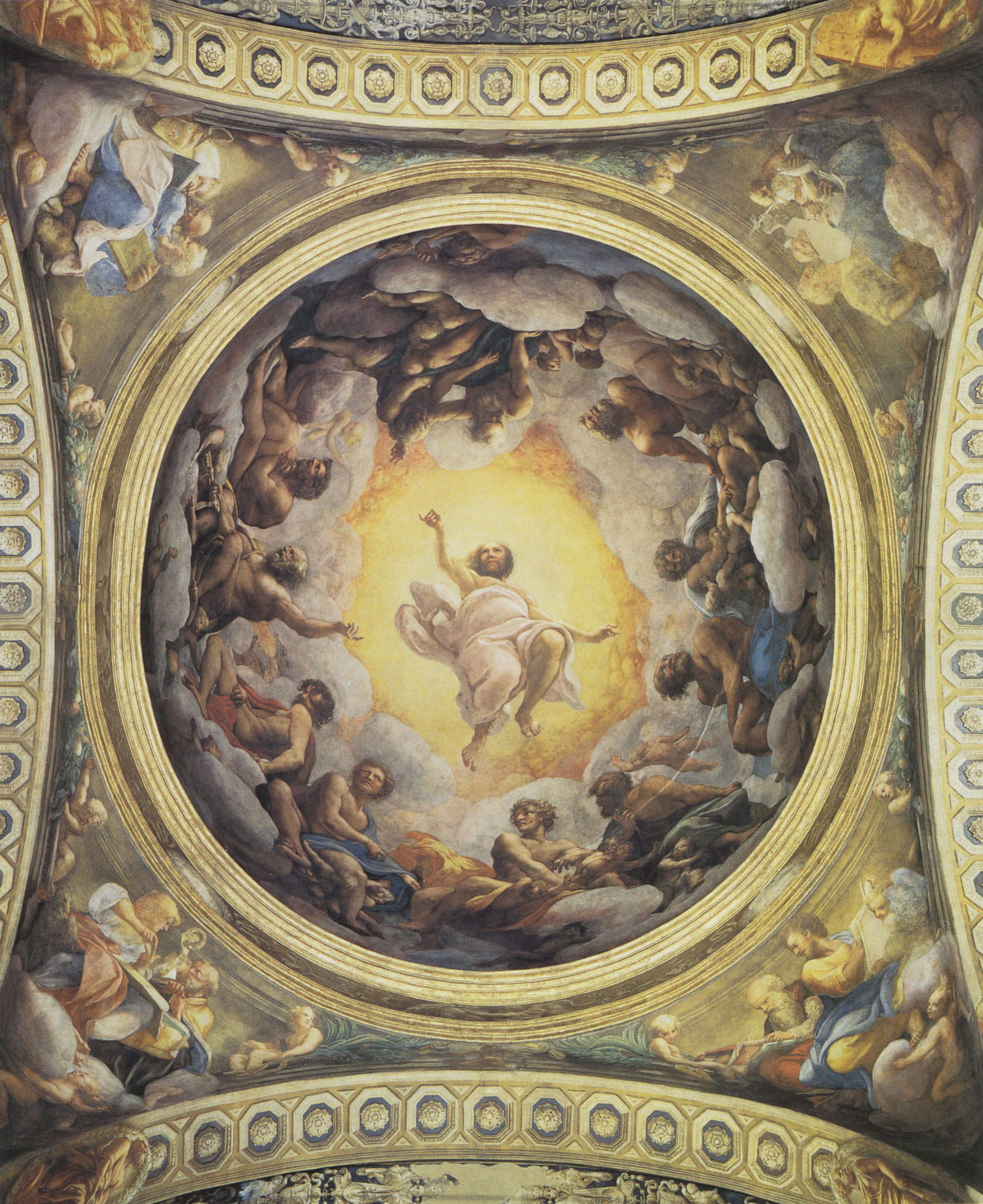 |
| Total zenith view of the dome from the nave |
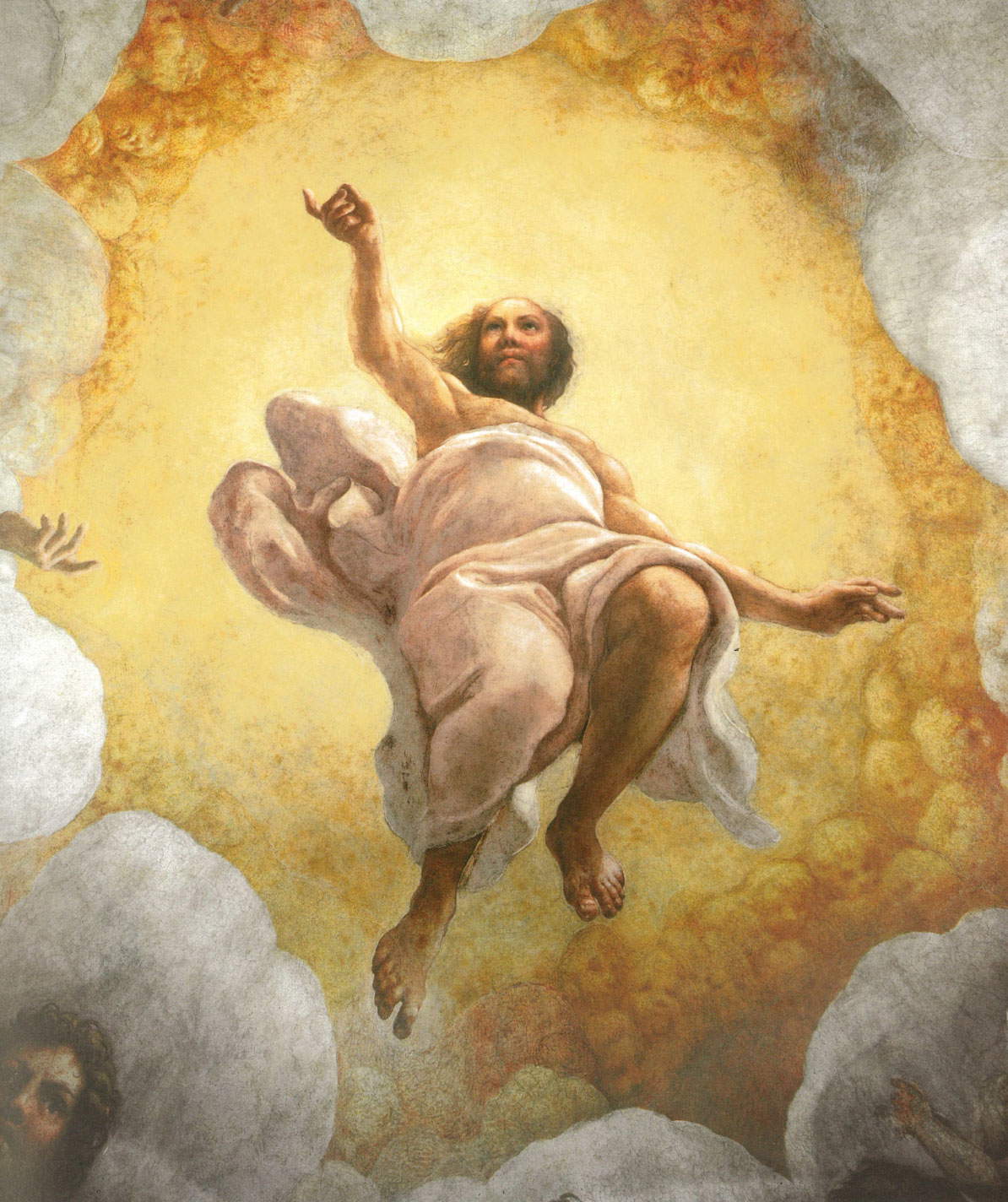 |
| Christ descending among angelic thickness, dome of San Giovanni in Parma |
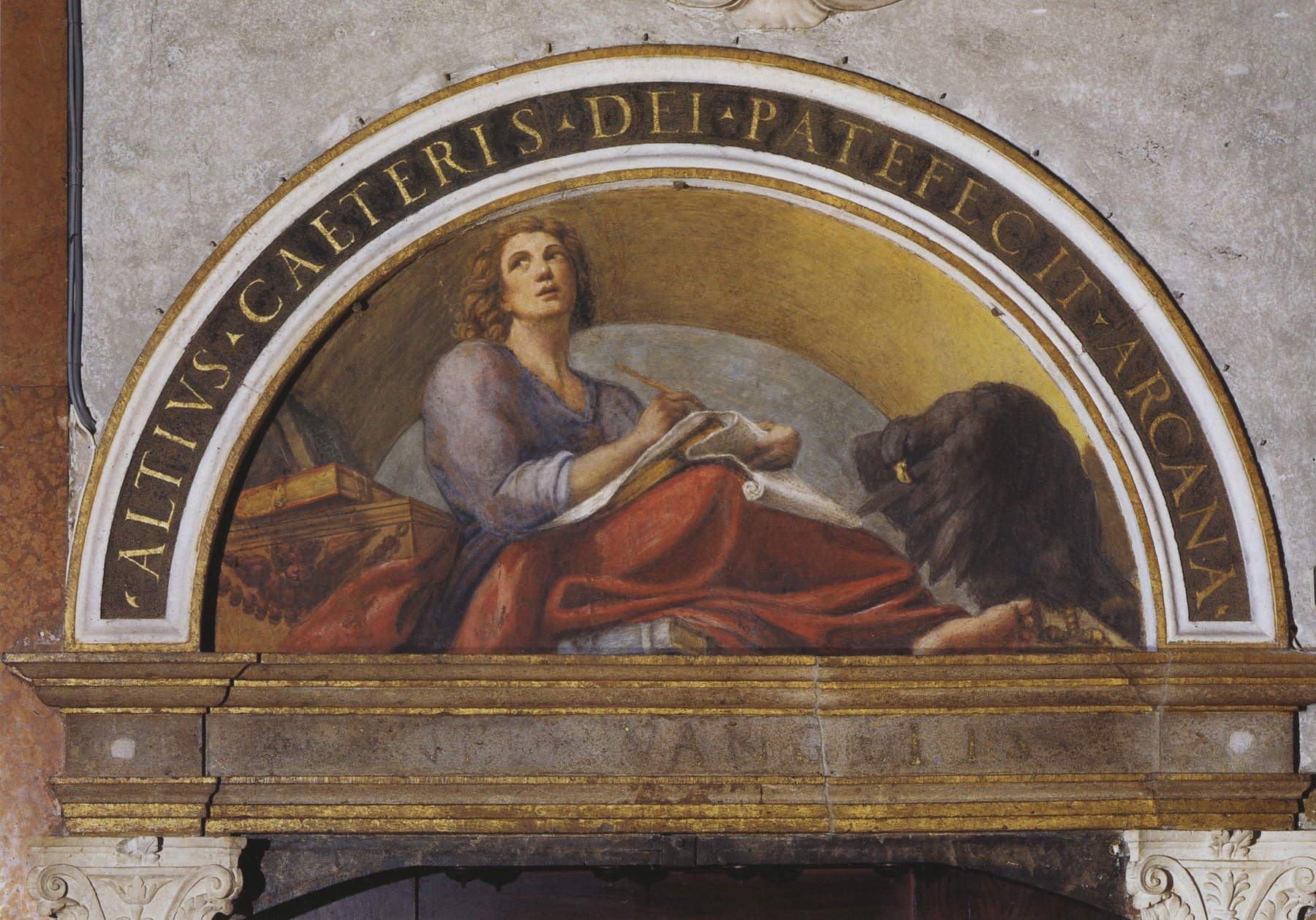 |
| Lunette with figure of young St. John the Evangelist with eagle |
 |
| Detail with apostles seated on clouds |
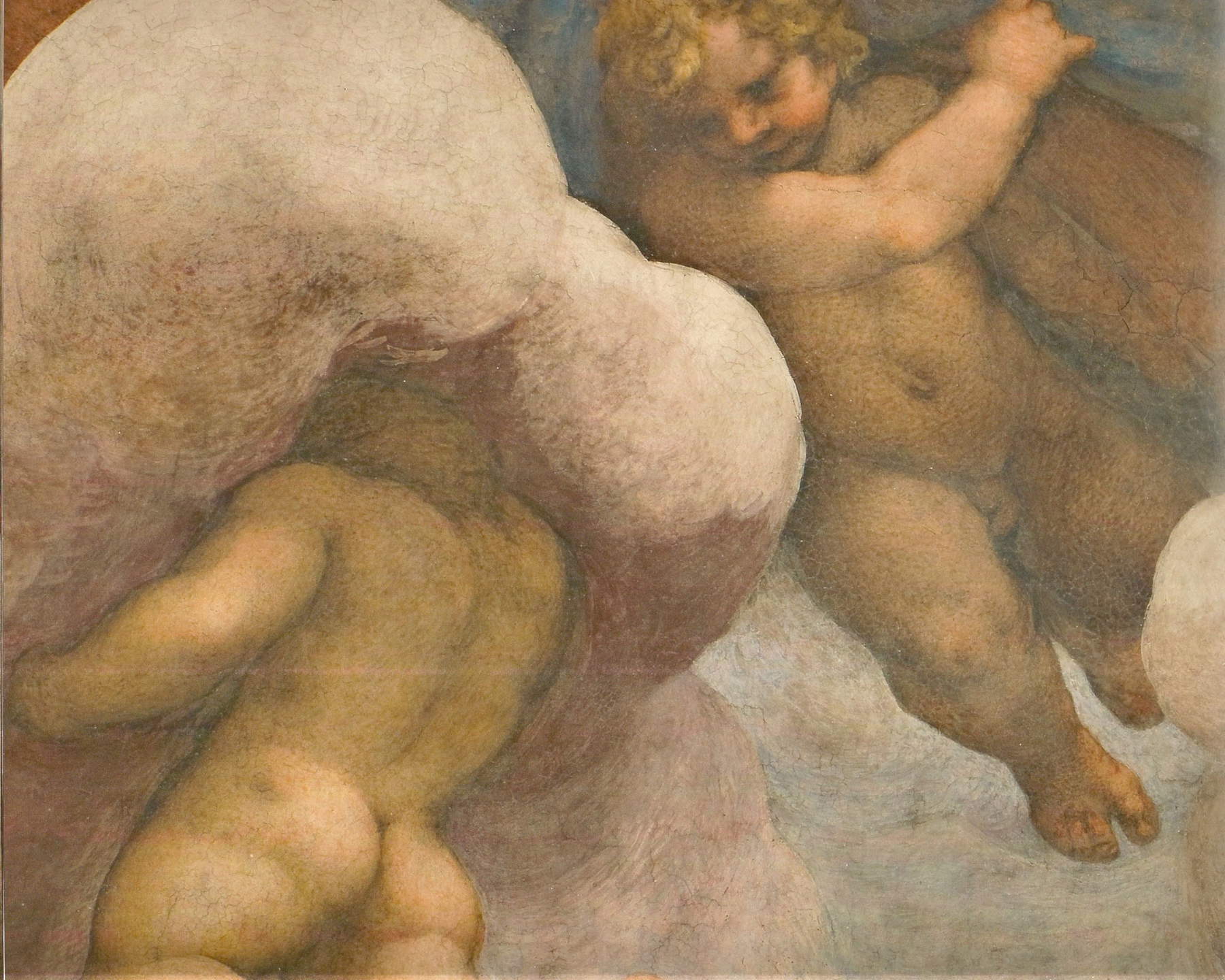 |
| The play of angelic putti in the dome of San Giovanni |
According to ancient early Christian and medieval practice in a church, the floor and path of the nave represent the path of earthly life, the pillars and walls are illustratively dedicated to historical events and exemplary motifs, while the bowl and roof are par excellence the “pars coelestis,” reserved for God and heaven. Such figurative destinations have always remained, and Correggio confirms them in the total pictorial project he is called upon to carry out. The dome presents itself as an exceptional element, here perhaps physically prepared with the direct advice of the painter: in a slightly ovoid form, without lantern, with a short ring like a drum where four oculi are placed, barely perceptible from below. Correggio, an expert in architecture, was constantly present in Parma during the wall composition of the dome, and it is believed that he so chose it for the visual reason he himself envisaged, that is, with the possibility of obtaining a decisive projection of altitude. He arranged all the mystical preparation in the very long frieze, dedicated to pagan and Jewish sacrifices, and the exegetical support - biblical and evangelical - in the pendentives and in the narrow drum through the doctrinal figures, reserving for the dome the supreme divine presence.
In fact, the dome is conceived by the artist as the heaven of heavens, the summit of the empyrean, the unattainable abode where God stands in excelsis in total ethereal light. Here is the perspective of the unattainable ! Hence a pictorial proposition that totally denies the physicality of the artifact, that poses no partition, as had always been the case even for the very great coeval masters, but pours itself into a boundless, cosmic and celestial space. Here is the “miracle of art” as well understood by the astonished contemporaries. The infinity within which the marvelous figures move has an astonishing, unseen and ideistically unmeasurable subject, which takes place after the Apocalypse: and it is properly St. John the Evangelist, the author of the last sacred text with the sublime revelation of the Heavenly Jerusalem, who is called to the supernal life by the Creator himself. Christ descends from the empyrean, from the dazzling light among a thickness of angelic spirits, and approaches the choir of Apostles, supported in the heavens by the medium of the sprinkling clouds. Except for the invoking St. John, below these, each figure is suspended, swirling; and free Jesus is detached from all physical reference by a prodigy of painting. It is this freedom in globular space that no master, neither Melozzo, nor Mantegna, nor Michelangelo, nor Raphael had been able to give.
In the later dome of the Duomo, Correggio will take to the extreme any possibility of painting from below a myriad of characters screwed into a supreme whirlpool. And so it was that art throughout Europe found new fields, new beauties of bodies, new sap for centuries. So Parma must revise its program, must play its cards to the full, certain that it is the city-marvel that can attract every people in the world, today and in the future, without forgetting that Correggio always offers profound culture and beatifying sweetness, to abode the soul.
Warning: the translation into English of the original Italian article was created using automatic tools. We undertake to review all articles, but we do not guarantee the total absence of inaccuracies in the translation due to the program. You can find the original by clicking on the ITA button. If you find any mistake,please contact us.